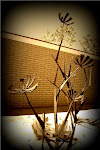Monday, August 26, 2019
Summer of '69
Summer of ’69 is a novel written by Elin Hilderbrand. Reading the dust cover synopsis, it sounded like a nice summer read; however, actually turning the text page by page is a different experience. The story is ponderous, the prose is redundant, and the actual plot is quite thin. I started the novel, lost interest, read a couple of other books, and then returned. Starting over, I expected the story to be better than I remembered, but it isn’t, so I’m done reading at page 300 of the total 418.
The redundant prose is annoying: “Pick’s eyes, she notices, are Lorraine’s eyes, the frosted blue of sea glass,” followed immediately by “He’s as brown as a berry.” She says “That’s either wonderful or the saddest thing Kate has ever heard; she can’t decide which."
The ponderous story drags by, sentence by sentence. “So this is Bitsy Dunscombe fueled by one too many, Kate thinks. She gets ugly—not only her language, but her face as well. Her expression contorts into a hideous mask with narrowed, accusing eyes and twisted lips. If she says anything about Tiger, Kate will slap her or throw a drink in her face. The piano player will stop right in the middle of ‘Try to Remember,’ and the revelers at table 1 will gape first and gossip later, and who could blame them?”
The actual plot is a typical coming-of-age story about a 13-year-old girl who has a crush on an older boy. She is so typical that there’s nothing unique about her, and she certainly isn’t worthy of hanging an entire novel on. So far, the most exciting thing to happen to her is she gets her period and then her first bra, and I’m ¾ of the way through the novel
I simply cannot force myself to finish reading this story at this time. It reminds me of Downton Abbey, a series I dreaded. I watched several episodes, but never bonded with either the characters or the plot, even though I have friends who were entranced by the series and wouldn’t answer the phone for anyone when Downton Abbey was on.
I’ll pass this book on to someone who will appreciate it and pick up my next read, James Patterson’s The Inn. I’ll let you know how that goes.
Sunday, August 25, 2019
Where the Crawdads Sing
We all need a place to go, to escape the realities of our daily lives, a place that author Delia Owens calls the place “Where the Crawdads Sing,” which is the title of her best-selling novel about a young girl who is abandoned to raise herself in a swamp after her mother dies and her father walks off one day. The story of Kya is mesmerizing, told with rich detail and gritty emotion and fascinating insights into swamp life. Kya is a survivor, a person who went to school for one day, then retreated to her swamp where she feels safe and protected. She learns how to fend for herself while studying the rich plethora of animal and insect life that occupies her time during the day so she only has to cope with the isolation of the nights.
A young man, Tate, befriends Kya and teaches her how to read and write. Once she knows those two basic skills, she begins to catalog all the insects, the swamp creatures, and the migrating birds that form her world. She collects empty shells and discarded feathers, and other memorabilia of her habitat, then she curates the story of each object/item/collectible and paints a picture to show its origin. Tate is her only friend and she cherishes his visits. She also feels drawn to Jumpin’, a black man who purchases the mussels and other seafood Kya brings him almost daily, and sells her gasoline for the engine of her small boat. Jumpin’ doesn’t need what Kya brings him to sell, but he knows that she’s alone and has to have foodstuffs in order to survive. The third important person in Kya’s life is Chase, the nearby town’s man about town, the good-looking athlete from a well-to-do family who pursues Kya in spite of her oddities. It is only when Kya reads in a newspaper that Chase is engaged to be married that she realizes that Chase has used her. She sends him off and vows never to be involved with him again.
Nature is the backstory, the neighborhood for the people and events of the novel. The reader can almost smell the fetid earth and hear the callings of the various birds that make the swamp home. Kya becomes a living representation of Mother Nature as she tells her story among the wildlife of the swamp. It is a fascinating story that sometimes moves slowly through the richness of the telling, and, at other times, moves quickly as Kya struggles to survive. This novel is not for everyone as it takes time and patience to read through the many events in Kya’s life, riding with her in her swamp boat as she tours her environment and catalogues it for the mere love of the recordkeeping, but it’s definitely a novel worth reading.
Subscribe to:
Comments (Atom)




